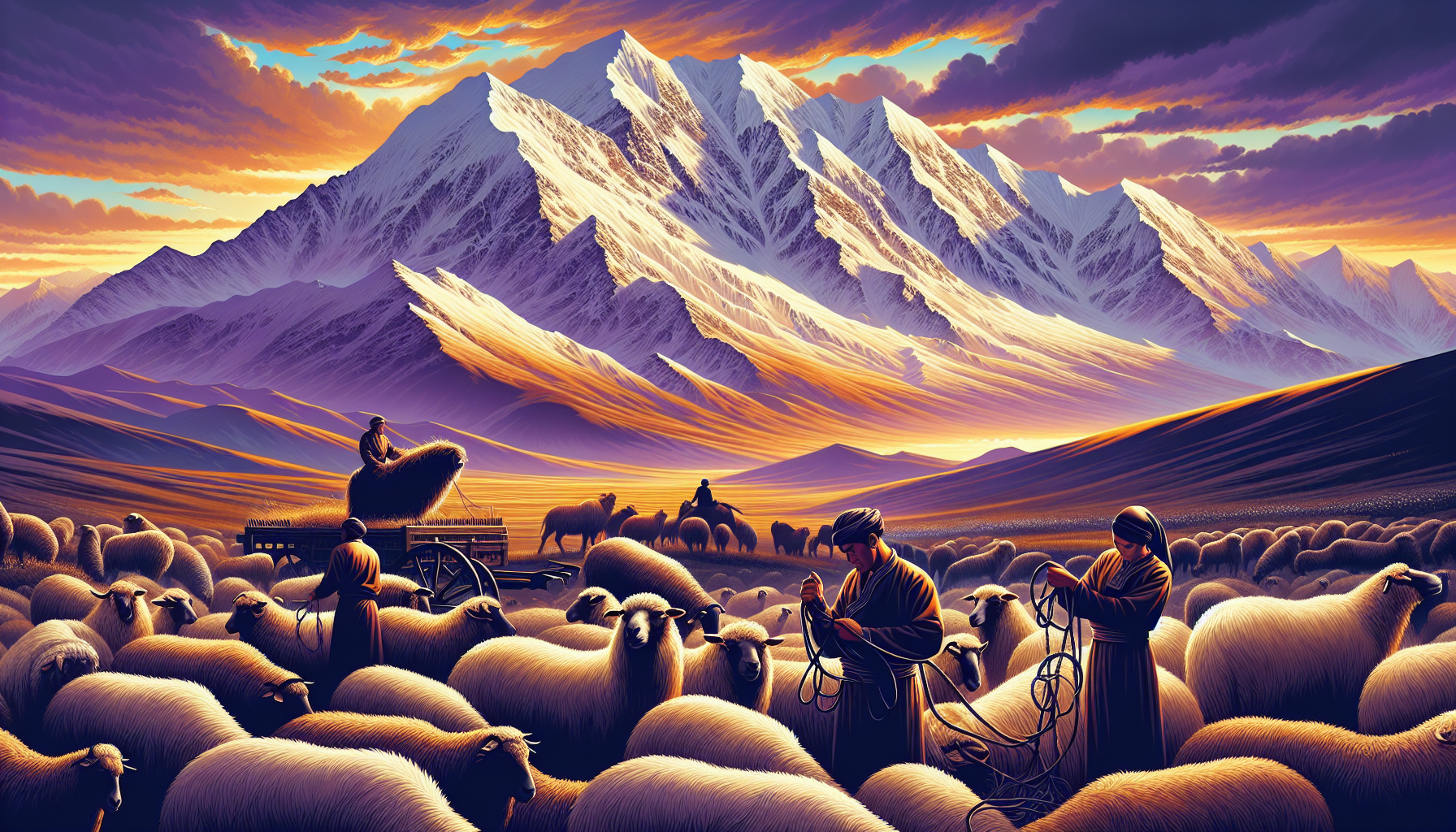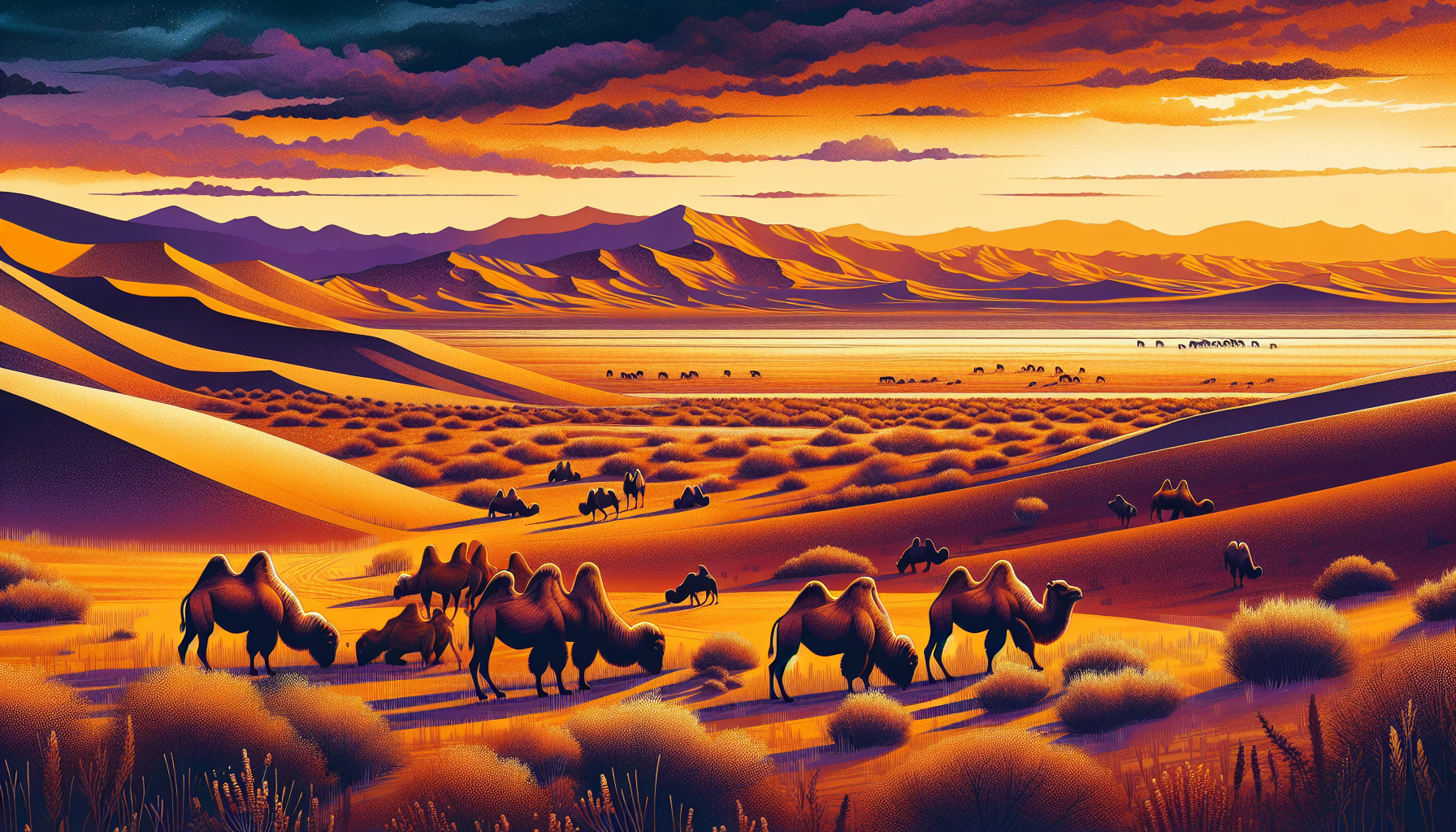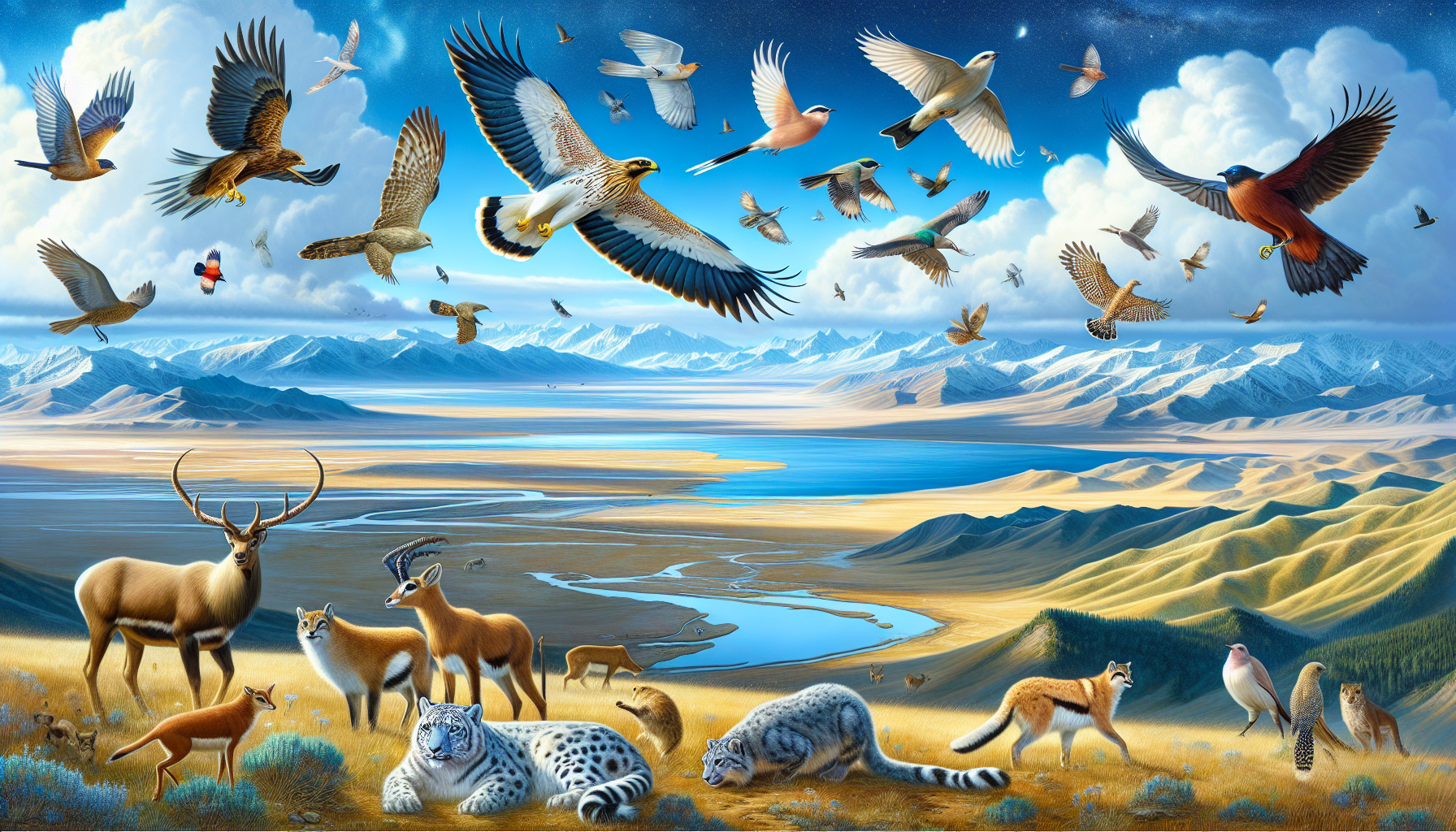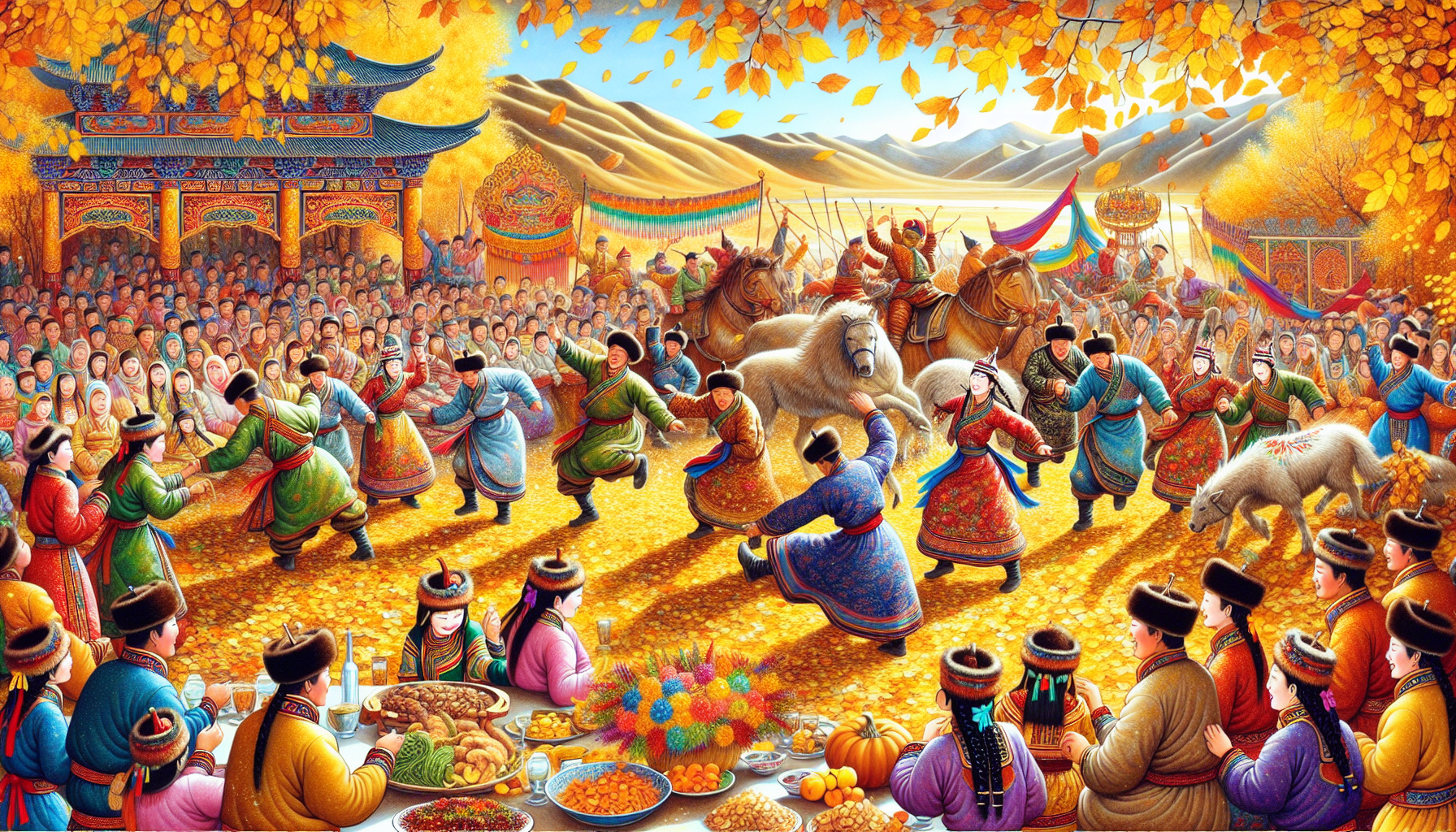Request A Car Rental
Travelling to Mongolia and need a car rental plus extra equipments?
Discover the Golden Hues: A Guide to Mongolia in Autumn
What makes Mongolia in autumn a destination unlike any other? It’s the season when golden plains, nomadic lifestyles, and ancient customs blend against a backdrop of crisp fall weather. If you’re considering a journey into this corner of the world, autumn provides a perfect balance of accessible outdoor adventures and rich cultural tapestry without the summer crowds.
Key Takeaways
- Western Mongolia offers a rich cultural experience in autumn, including the UNESCO-recognized tradition of eagle hunting and festivals that showcase Kazakh heritage and the preparation for winter hunts.
- Central Mongolia provides an authentic immersion into nomadic life where visitors can participate in traditional activities such as horseback riding and herding, as well as engage in local customs like helping prepare for the winter and animal branding rituals.
- Travelers in the Gobi Desert during autumn can enjoy picturesque landscapes, wildlife observation, and unique experiences like camel rides, while also engaging with local nomads and learning about their resilient lifestyle and culinary traditions.
Experience the Golden Season in Western Mongolia

As you venture into Western Mongolia, a land where the Altai Mountains kiss the azure sky, the autumn season unfurls its magic. With average temperatures ranging from 5°C to 15°C, the dry season showcases the region’s landscapes in their full autumnal glory. Draped in a golden cloak, the scenery is a feast for the senses, but it’s the cultural richness that truly sets this region apart in the Mongolian autumn.
From the revered eagle hunting practices to the unique Kazakh traditions, Western Mongolia offers a profound cultural journey during the fall. The eagle hunters, clad in their traditional attire, are a sight to behold as they hone their skills with their majestic eagles, preparing for the winter hunts. But the cultural immersion doesn’t stop there. The autumn season in Western Mongolia is replete with festivals and celebrations that reveal the heart of the Kazakh heritage.
Eagle Festival in Ulgii
One of the highlights of your journey to Western Mongolia is the Eagle Festival near Ulgii. A significant cultural event, it’s a celebration of the ancient art of eagle hunting, a tradition so profound that UNESCO recognizes it as an Intangible Cultural Heritage of Humanity. The festival, held in early October, sees an influx of tourists and photographers, captivated by the spectacle of eagle hunters demonstrating their skills and the bond with their birds.
The festival is a vibrant tableau of competitive events, from eagle flying competitions to hunters’ events like coin grabbing on horseback. Each event is a showcase of the hunters’ traditional clothing and their deep bond with their birds. With the festival’s success, more young Kazakhs are eager to learn the tradition. However, concerns have been raised about the potential negative impacts of tourism on the authentic eagle hunting practices. It’s a delicate balance, a dance of preservation and celebration, that makes the Eagle Festival an experience to cherish.
Eagles & Empires Tour
If you’re yearning for a deeper immersion into the cultural fabric of Western Mongolia, the 14-day Eagles & Empires tour is your ticket. A journey that spans cultural sites like the Erdene Zu Monastery, it also offers a chance to live the nomadic lifestyle by staying with local families in Mongolia, all while exploring the rich history of the Mongol Empire.
The tour is a dynamic blend of diverse activities, including horse and camel riding, as well as meeting with eagle hunters to witness their traditional practices. As you navigate through a tapestry of terrains - asphalt, dirt, and sandy tracks - you’ll experience the changing moods of Mongolia.
Rated at a level 4 difficulty, the Eagles & Empires tour offers a moderately high challenge that’s well worth the adventure.
Embrace Nomadic Traditions in Central Mongolia

As your journey leads you to Central Mongolia, you’ll step into a world where time seems to stand still. Here, autumn, especially early November, is a time when nomadic herders move their herds to autumn pastures and begin the crucial task of preparing for the challenging cold winter months. The nomadic traditions of Central Mongolia offer an enriching experience that goes beyond the usual tourist trails, inviting you to become a part of the rhythm of life that has been passed down through generations.
Imagine assisting with preparing livestock for winter or experiencing rural homestays, where you can contribute to daily tasks like grass-cutting and participate in the making of traditional Mongolian dairy products for winter storage. This immersion into the nomadic lifestyle is not just about witnessing a different way of life, but also understanding the seasonal tasks that define it, such as maintaining winter pastures and setting up winter shelters. It’s about breaking bread with local families, learning to make meals such as Buuz and Khuushuur, and engaging in a cultural exchange that enriches both the traveler and the host.
Horseback Riding Adventures
One of the most thrilling ways to explore Central Mongolia is on horseback. Horseback riding tours take visitors through an array of diverse landscapes, including:
- Forests
- Deserts
- Steppes
- Lake lands
Guided by native Mongolian guides, you’ll have the chance to engage with local herders, experiencing their traditional and nomadic way of life.
While staying with one of the nomadic families, a horse breeder family, you’ll:
- be matched with horses that suit your riding abilities
- learn the essentials of Mongolian horsemanship, a skill that’s deeply intertwined with the country’s history and culture
- ride through the vast landscapes
- feel a sense of freedom and connection that’s unique to the nomadic way of life.
Witnessing Branding Rituals
In the heart of Central Mongolia, autumn is also a time for significant cultural events. One such event is the branding of young horses, a ritual that offers deep insights into Mongolian traditions. As a visitor, you’ll have the chance to participate in the branding rituals of foals, an integral aspect of the work of Mongolian herders.
Witnessing the branding rituals is more than just a spectacle; it’s a window into the values and traditions that have shaped Mongolian society for centuries. As the young horses bear the mark of their herds, you’ll bear witness to a culture that reveres its animals and respects the land that sustains them.
Marvel at Gobi Desert's Autumn Beauty

Your journey now takes you south to the enigmatic Gobi Desert. In autumn, the Gobi reveals a different side of its character. The sunrises and sunsets over the vast steppes offer picturesque scenery with vivid colors that enhance the desert’s autumnal beauty. Traveling on the Trans-Mongolian train to Sainshand, you’ll get opportunities to observe wildlife native to the Gobi, such as herds of White-Tailed Gazelle, enriching your autumn experience in Mongolia.
The Gobi Desert isn’t just about the vast empty spaces; it’s also about the extraordinary experiences it offers. Some of these experiences include:
- Climbing the Khongor Sand Dunes, among the tallest in Mongolia, and sliding down to hear the unique ‘singing sands’
- Marveling at the night sky, where the clarity and brightness, coupled with the abundance of visible stars, offer a truly breathtaking experience
- Staying in accommodations that are situated to maximize panoramic vistas, providing travelers with 360-degree views of the expansive landscape, a serene setting to absorb the desert’s autumn beauty.
Camel Rides and Hiking
Adventurous spirits will revel in the Gobi Desert’s camel rides and hiking trails. Exploring the desert’s vastness atop traditional animals like the two-humped Bactrian camels is an experience that’s quintessentially Gobi. Known for their gentle gait, these camels offer a comfortable journey across the sand dunes, providing a unique perspective on the desert’s landscapes.
Camel riding trips often include:
- Starting from Khavtsagait
- Traversing the Gurvansaikhan Mountains
- Visiting the moving sands of Ayaldai Els
- Exploring regions with slow-growing saksaul trees
As you journey through the Gobi, you’ll feel a deep connection with the land and its timeless rhythms.
Traditional Meals with Locals
The Gobi Desert isn’t just about landscapes and wildlife; it’s also about the people who call it home. Visiting Gobi Desert nomads offers a chance to savor traditional meals while experiencing their hospitable lifestyle, characterized by regular moves and minimalist living due to environmental constraints. You’ll not only taste the flavors of the Gobi but also understand the resilience and adaptability of the desert’s inhabitants.
For those interested in Mongolian culinary traditions, the Gobi offers cooking classes that teach local cooking techniques. Imagine learning to prepare traditional Mongolian dishes under the guidance of local cooks, a cultural exchange that’s both delicious and enlightening.
Explore Eastern Mongolia's Natural Wonders

As your journey continues eastward, Eastern Mongolia unveils its natural wonders. The region is home to picturesque landscapes and offers a refreshing experience within the desert. With the largest and most intact expanse of temperate grassland in the world, it’s described as one of the last true wildernesses on earth.
Whether you’re hiking through the green valleys of the Gurban Saikhan mountain range or exploring the vast steppes, Eastern Mongolia will captivate you with its raw beauty and serenity. But it’s not just the landscapes that make Eastern Mongolia special; it’s also the region’s rich biodiversity that adds to its allure, found within its stunning mountain ranges.
Bird Watching Tours
Eastern Mongolia is a paradise for bird enthusiasts. As a vital part of the East-Asian and Australian flyway, the region is a key habitat for migratory birds during autumn, with nearly 360 species found in this region. Bird watching tours provide sightings of species such as:
- Black Stork
- Swan Goose
- Various cranes
- Raptors
- A plethora of passerines and other birds
The presence of wetlands, forests, and steppes in Eastern Mongolia create a rich tapestry of habitats for various bird species, enhancing bird watching experiences. Especially during autumn, Mongolia’s lakes serve as ideal spots for observing a range of waterfowl that migrate from Siberia.
Wildlife Photography Expeditions
For those with a passion for wildlife photography, Eastern Mongolia offers ample opportunities. Some of the wildlife you can capture in your photographs include:
- Altai Snowcock
- Kozlov’s Accentor
- Snow Leopards
- Pallas’s Cats
- Mongolian Kulans
Eastern Mongolia is a wildlife photographer’s dream, capturing its own beauty in every frame.
These expeditions allow you to:
- Capture images of rare and endangered species in their natural habitats
- Provide not just a visual feast but also a deeper understanding of Mongolia’s biodiversity
- Track and photograph these animals
- Appreciate the delicate balance of life in this rugged landscape.
Autumn Festivals and Celebrations

Autumn in Mongolia is a time of plenty, with an abundance of milk products, crops ready for harvest, and animals prepared for slaughter. It’s also a time for celebration, with vibrant festivals that reflect the joy and bounty of the beautiful season. From the Golden Eagle Festival in Western Mongolia to local harvest celebrations, autumn is a time of festivity and cultural immersion.
In addition to the major festivals, there are also cultural events like the Ovoo worship festival and various marriage ceremonies that take place in autumn. These gatherings are not only social events but also serve as opportunities to share and promote traditional Mongolian skills. Whether it’s the making of various dairy products or the traditional music and dance performances, these festivals are a vibrant showcase of Mongolian culture.
Golden Eagle Festival
The Golden Eagle Festival is a pivotal event in the Mongolian autumn calendar. Featured in the Eagles & Empires tour, the festival allows participants to:
- Engage with local Kazakh culture
- Watch the eagle hunters demonstrate their ancient skills
- Be captivated by the bond they share with their eagles
- Experience the pride they take in their heritage.
The festival is also a time for community bonding. Visitors can enrich their experience by visiting Kazakh homes and sampling traditional Kazakh meals during the festival. It’s an opportunity to break bread with the locals, learn about their traditions, and experience their warm hospitality.
Local Harvest Celebrations
Local harvest celebrations are a highlight of autumn in Mongolia. These gatherings provide a venue for local communities, including many herders, to come together and celebrate the bounty of the season. They’re not just social events; they also serve as opportunities to share and promote traditional Mongolian skills.
As a visitor, you can learn about Mongolian traditions such as the making of various dairy products. Traditional beverages like airag, a fermented mare’s milk, are often featured and can be sampled by guests during these celebrations. These harvest celebrations are a feast for the senses and a testament to the resilience and resourcefulness of the Mongolian people.
Summary
As our journey through Mongolia in autumn draws to a close, it’s clear that this isn’t just a season; it’s a celebration of life, culture, and nature’s bounty. From the golden hues of Western Mongolia to the nomadic traditions of Central Mongolia, the autumn beauty of the Gobi Desert, and the natural wonders of Eastern Mongolia, the country unfolds like a rich tapestry, each region weaving its unique thread.
But beyond the landscapes and wildlife, it’s the people of Mongolia who truly enrich this journey. Their traditions, festivals, and way of life offer a window into a world that’s as captivating as it is inspiring. And whether you’re riding horses in Central Mongolia, tasting traditional meals in the Gobi Desert, or watching the Golden Eagle Festival, you’re not just a spectator. You’re a participant in a vibrant culture, a witness to a way of life that’s as enduring as the Mongolian steppes.
Frequently Asked Questions
Which month is best to visit Mongolia?
The best time to visit Mongolia is between mid-June and late August when the weather is sunny, with little rain, and the scenery is lush and green.
What is the duration of the Eagles & Empires tour in Mongolia?
The Eagles & Empires tour in Mongolia lasts for 14 days, offering an extensive exploration of the region's culture and history.
What are some activities included in the tour?
The tour includes activities such as horse and camel riding, meeting eagle hunters, and staying with nomadic families, offering a diverse experience for all participants.
What is the terrain of the tour?
The tour includes asphalt, dirt tracks, and sandy tracks, offering a variety of terrains to explore.
How are the tour levels graded?
Tour levels are graded from 1 to 5, with 1 being easy and 5 being challenging.
Request A Car Rental
Travelling to Mongolia and need a car rental plus extra equipments?






